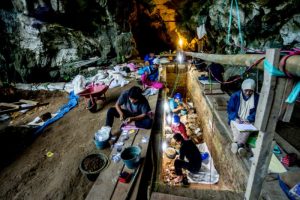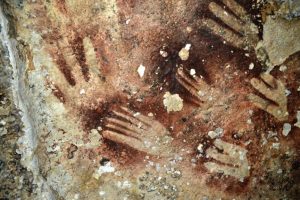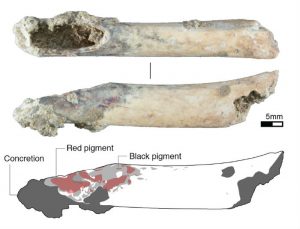Archaeologists unearthed rock art and jewellery dating back to the last ice age at Leang Bulu Bettue, a cave and rock shelter on Sulawesi, Indonesia. Experts estimate the finds may be at least 22000 years old.

The discovery suggest that people who lived in the Wallacea region were at that time more culturally advanced than some experts previously thought. Wallacea is a 1600-kilometre-wide zone of islands separating Southeast Asia from Australia. It is believed that modern humans reached it by about 47000 years ago.

Sulawesi is the largest island in Wallacea. Archaeologists unearthed at Leang Bulu Bettue cave a great number of evidence suggesting a flourishing artistic culture existing during the end of the last ice age. The age of artefacts is said to range from 22000 to 30000 years old. According to the researchers, until now no collections of diverse ice-age artefacts from Wallacea had been found.

The artefacts include disc-shaped beads made from the teeth of tusked boar-like animals known as babirusas, also known as “pig-deer”, and a pendant made from a finger bone of a monkey-like, tree-dwelling marsupial known as a bear cuscus. Other artefacts included stone flakes incised with geometric patterns; fragments of mineral pigments such as red- and mulberry-colored ochre; and a long, hollow bear-cuscus bone with traces of red and black pigment that might have been used as a kind of airbrush for creating rock art.

According to the researchers these new findings suggest that ancient humans in Wallacea were creative and artistic people whose symbolic culture adapted readily to the marsupials and other novel forms of animal life encountered in this region. These cultural adaptations might have been crucial to the colonization of the ancient continent of Sahul (what is now Australia, New Guinea and Tasmania) given the rich, diverse, unique and unfamiliar animal and plant species there. The symbolic relationships seen between humans and animals that characterize Aboriginal cultures of Australia may have their roots in the human journey across the region.

Wallacea is also the place that yielded the so-called “hobbit” fossils on the island of Flores (south of Sulawesi) in 2003 and some of the world’s oldest rock art in 2014. Yet, according to archaeologists there is no obvious connection between this discovery and the so-called “hobbit” lineage.

(after Griffith University, Luke Marsden, Justin Mott, Mott Visuals, Adam Brumm, Michelle Langley, Yinika Peston, ABC News, New Scientist & Live Science)